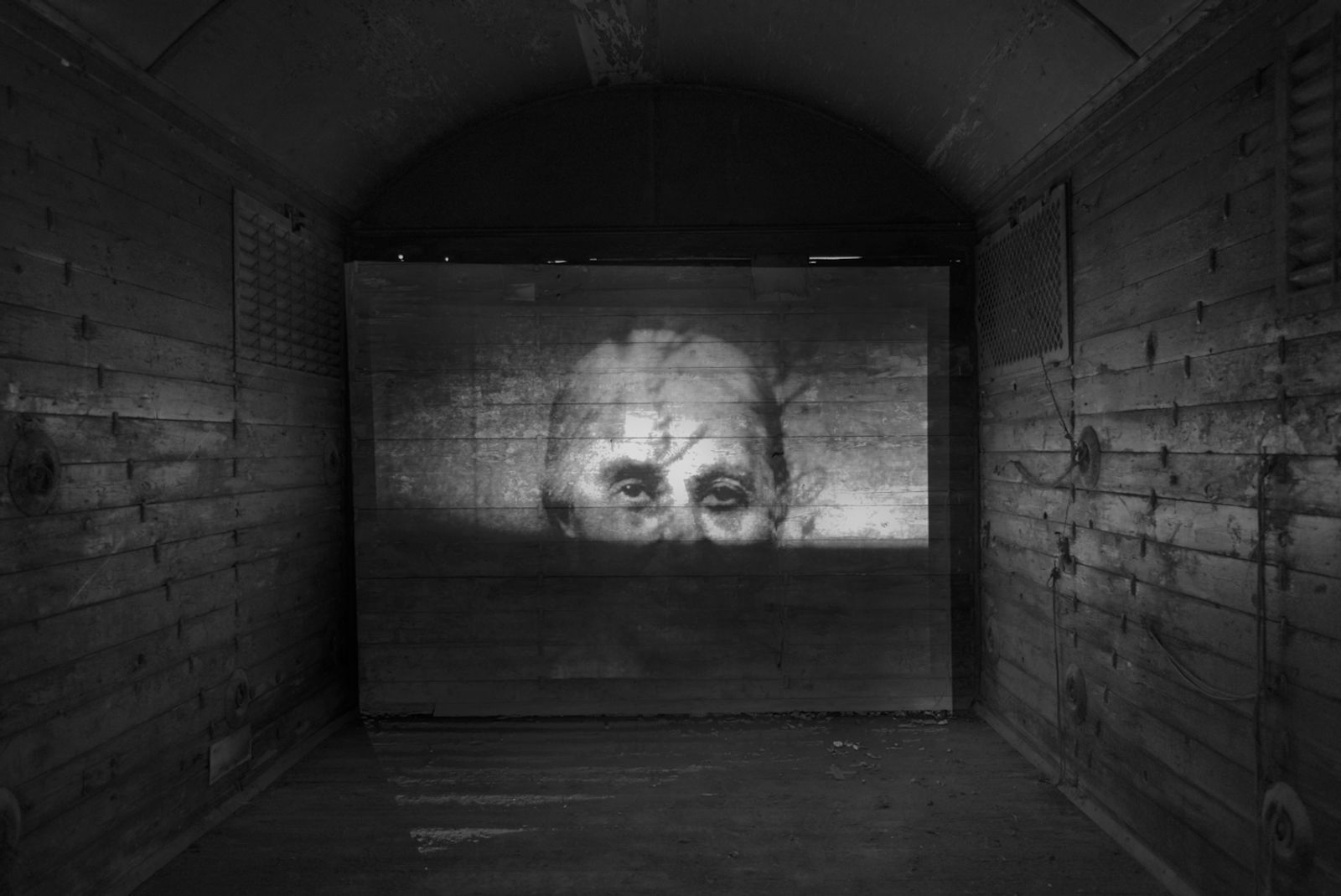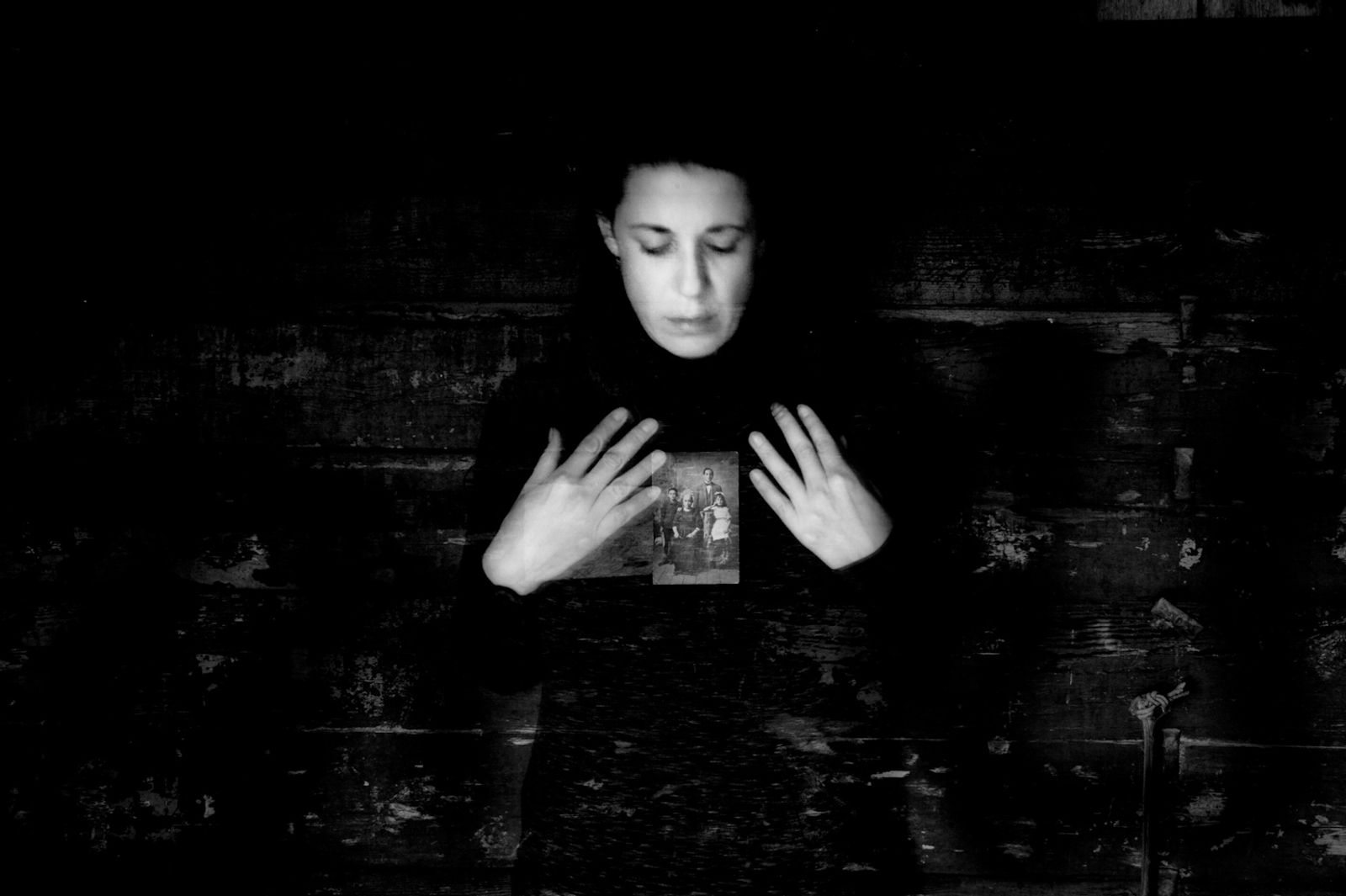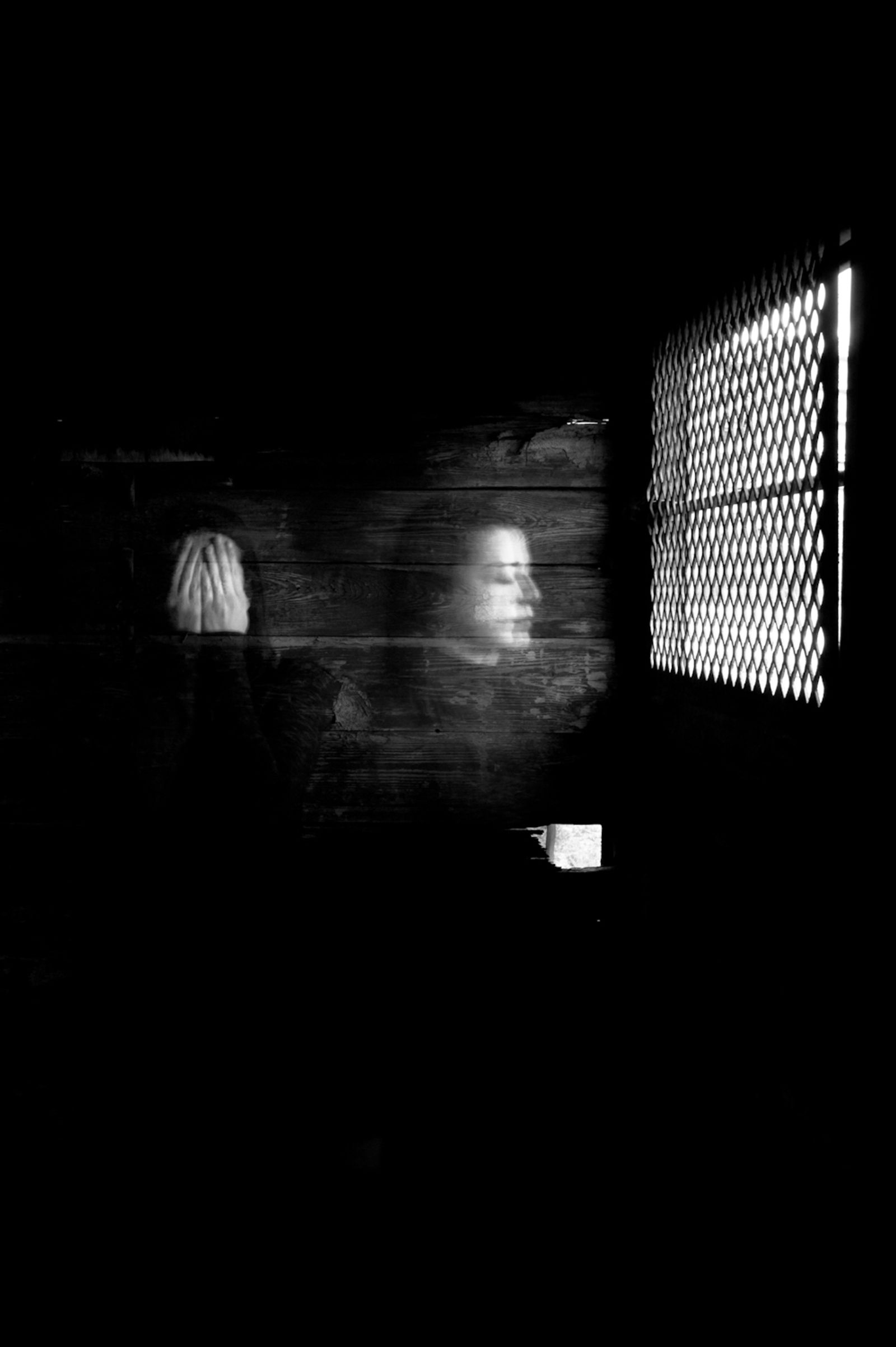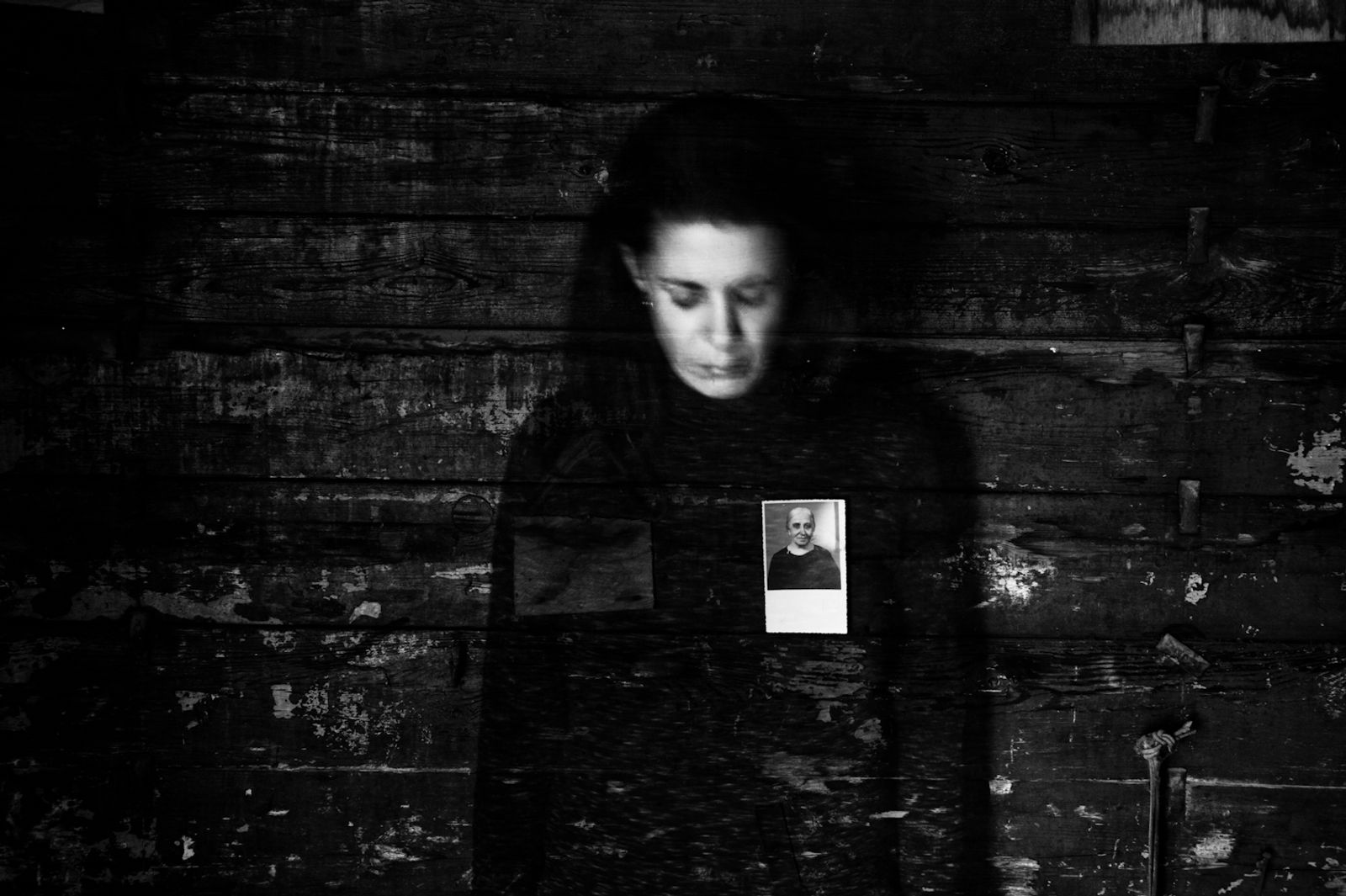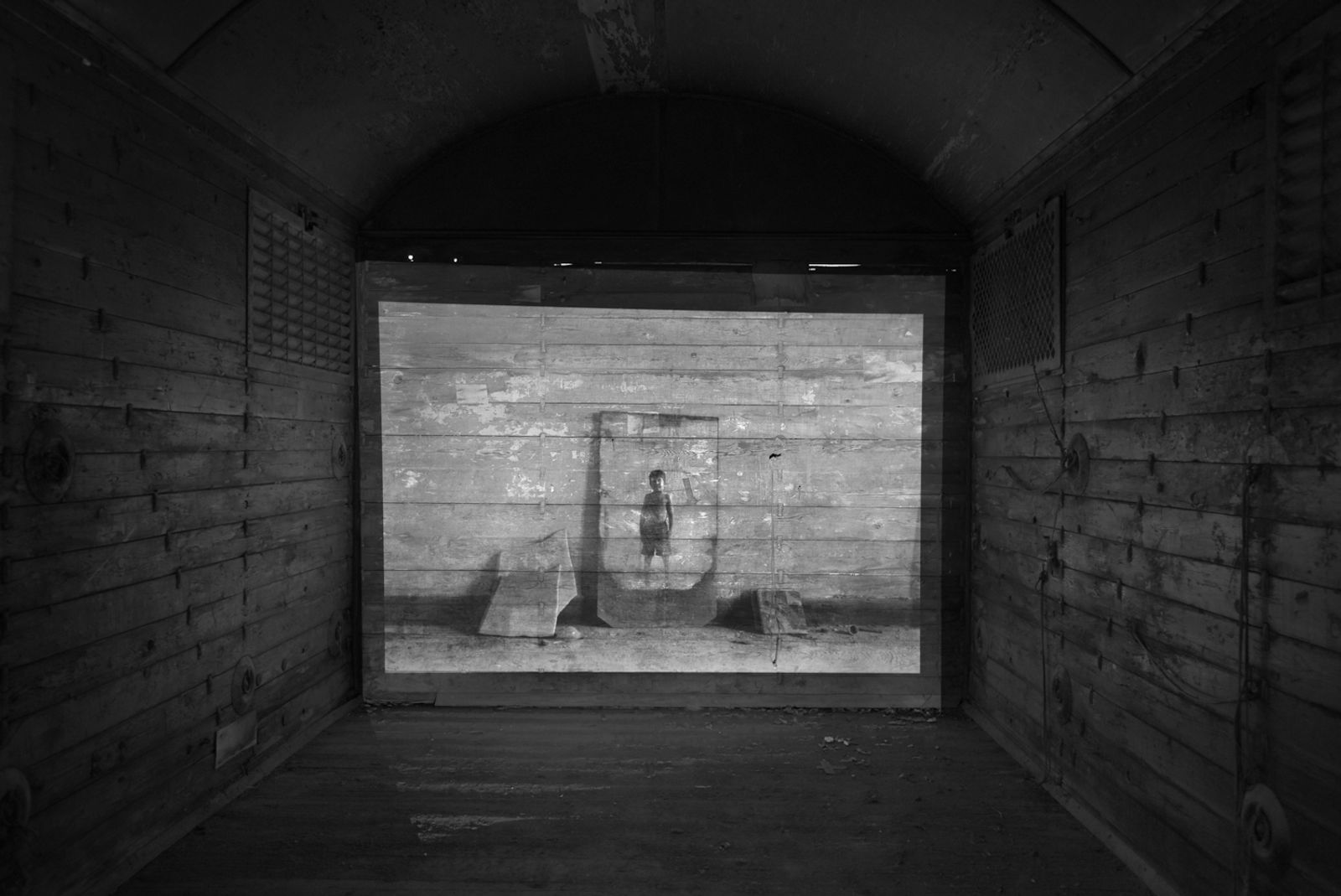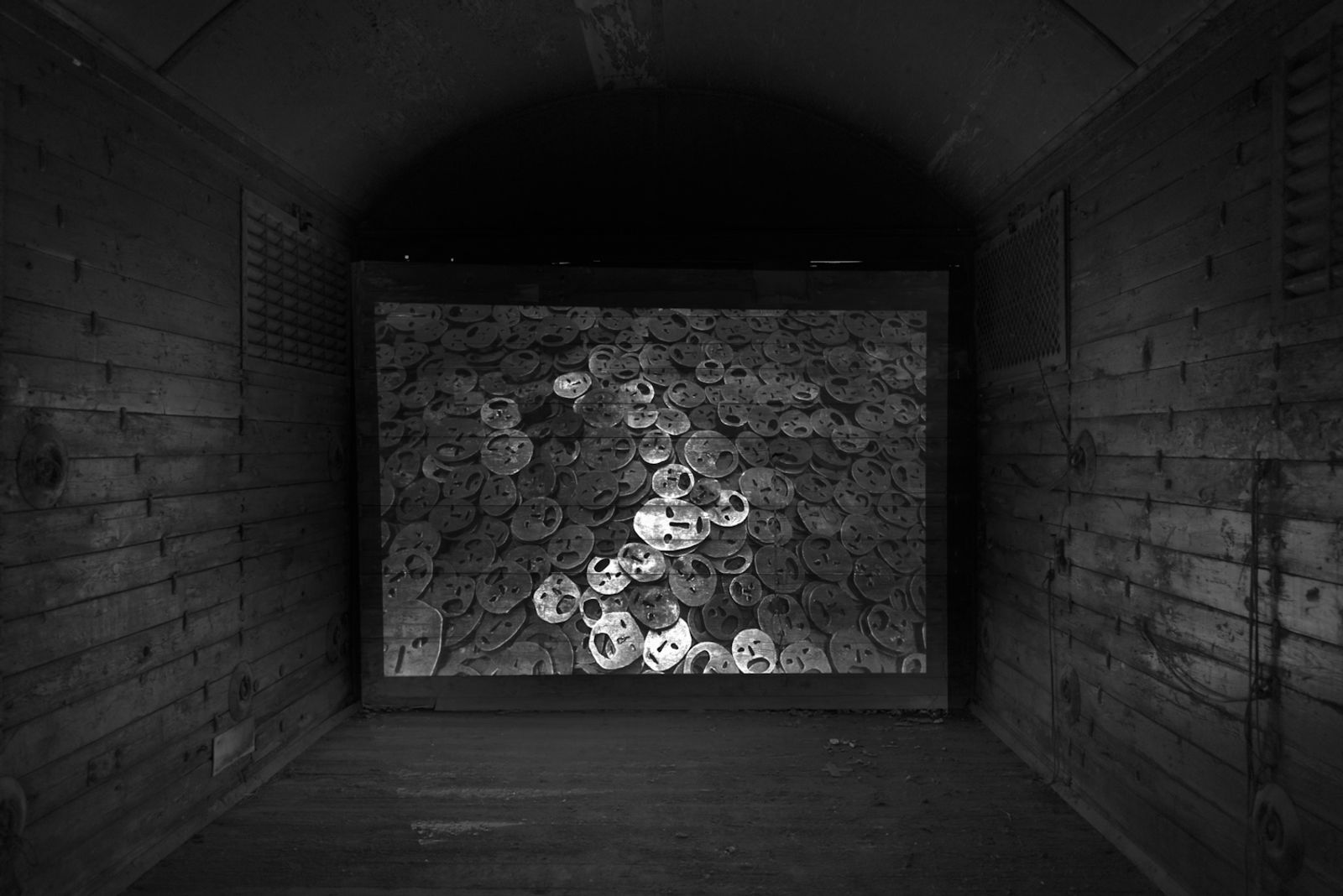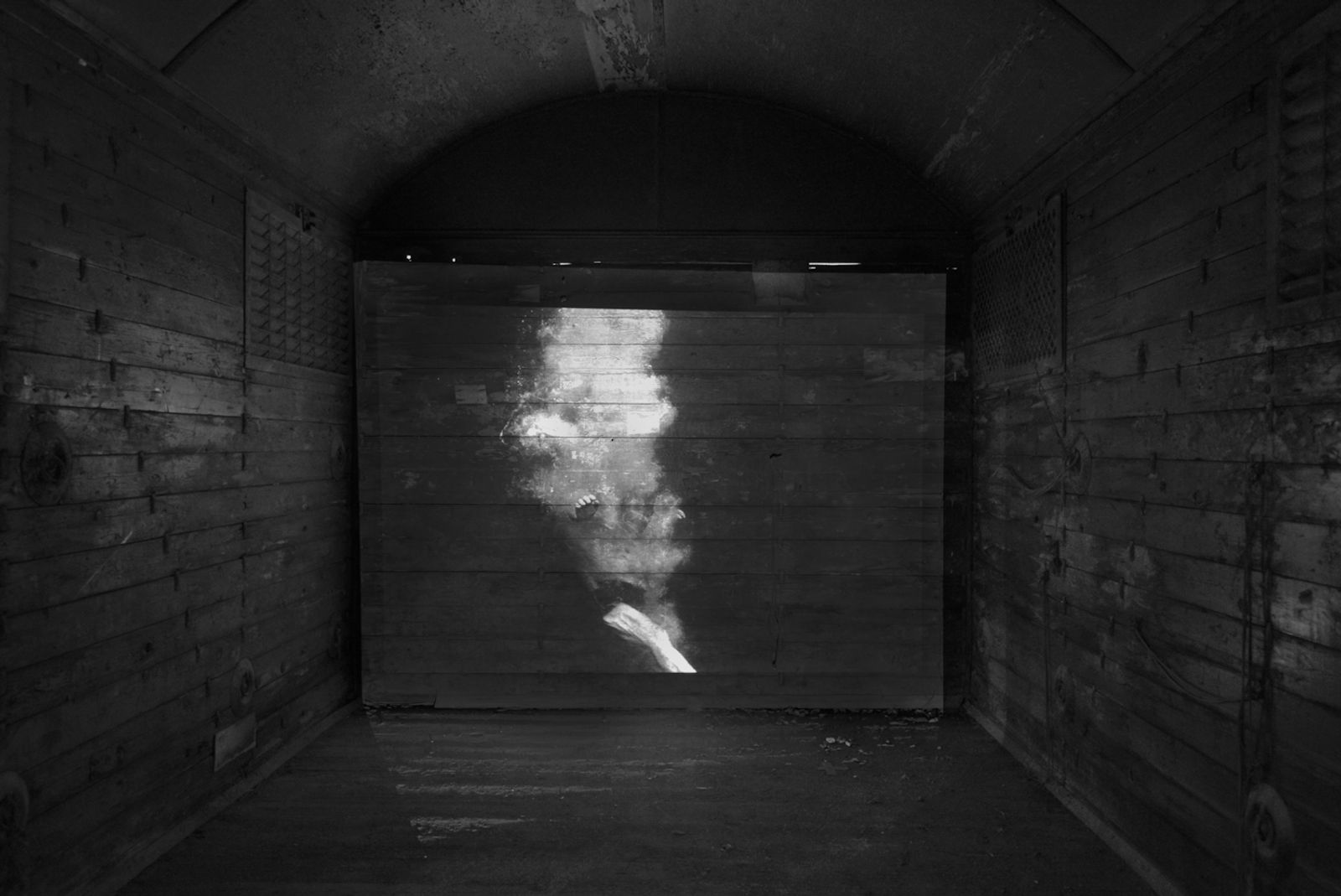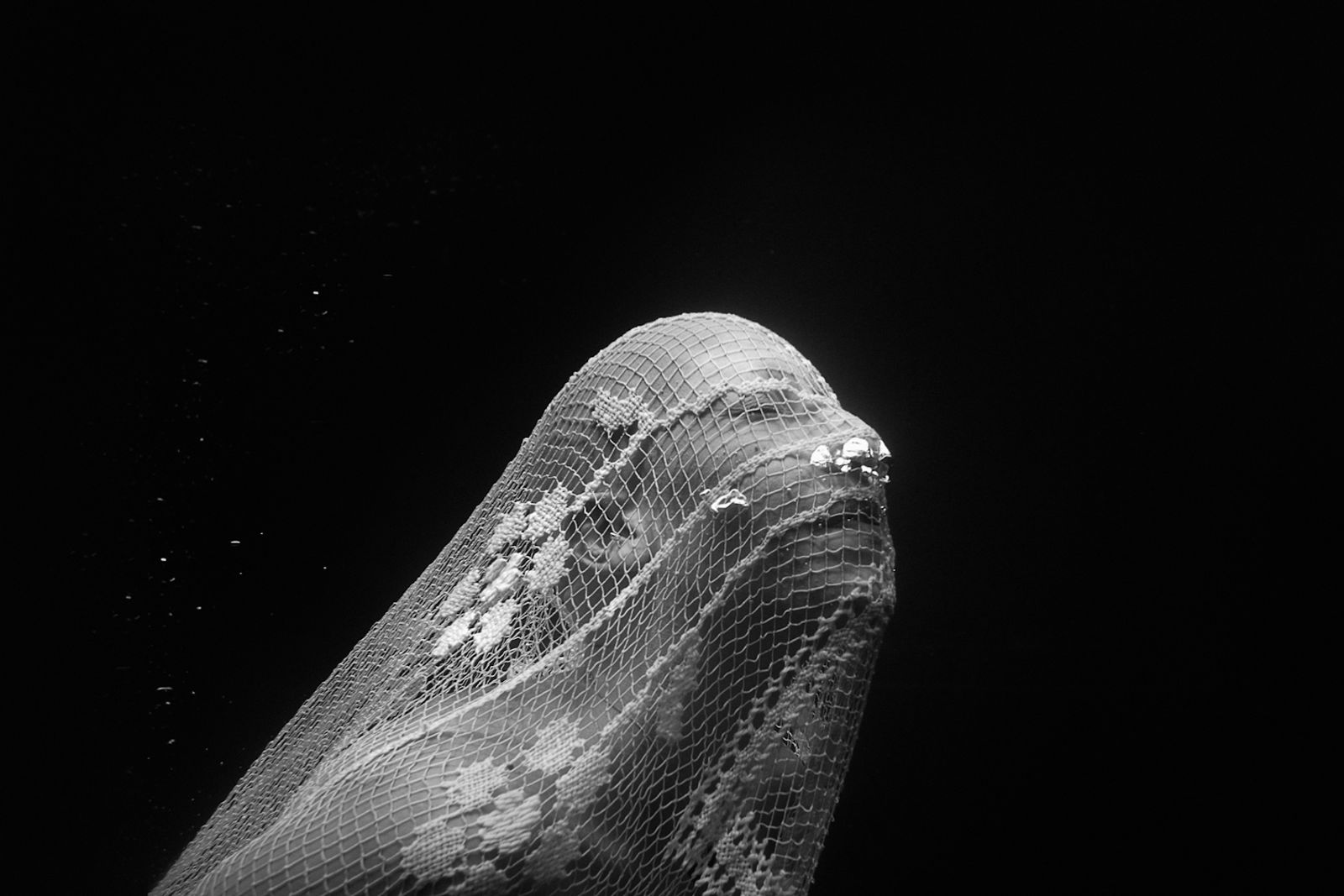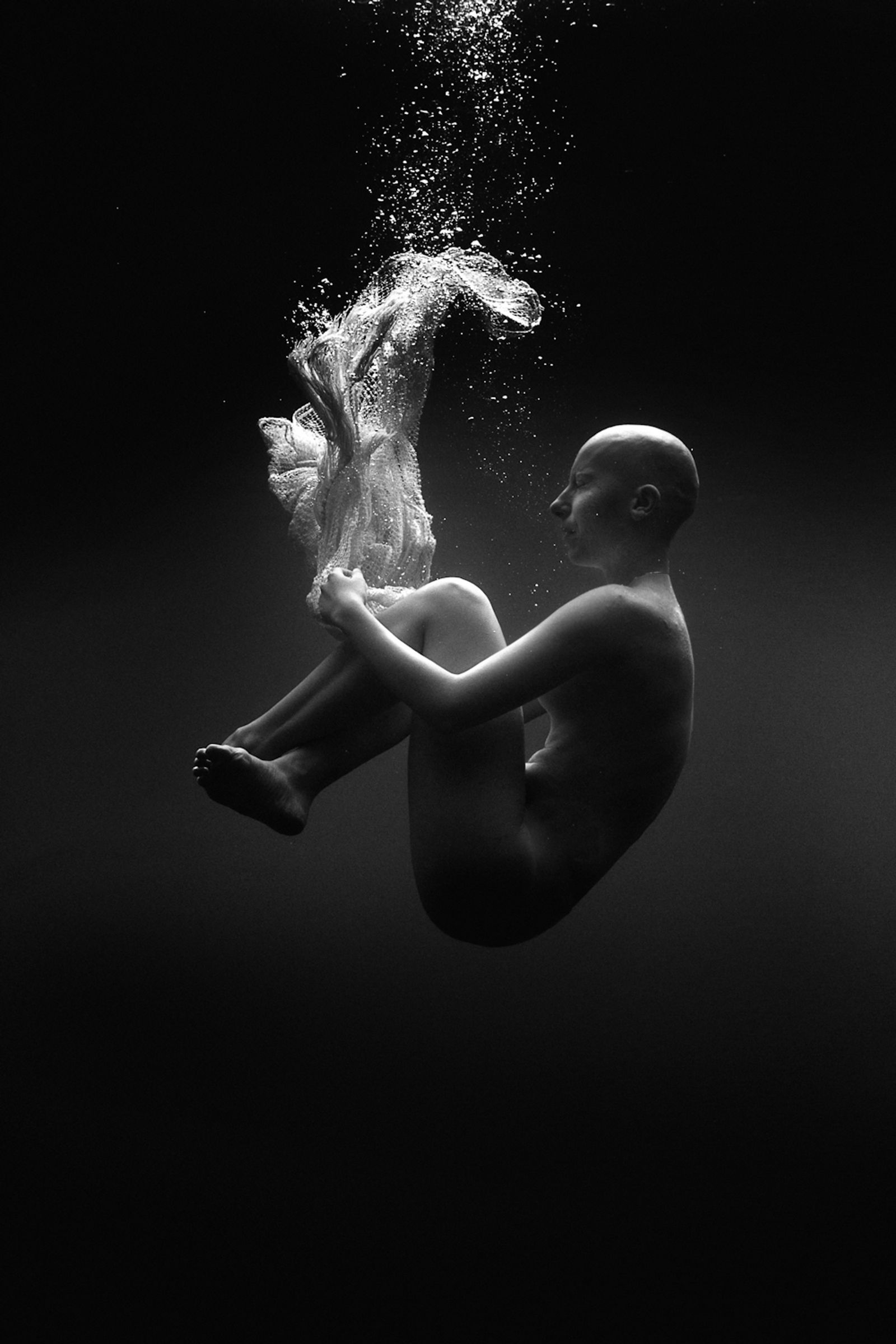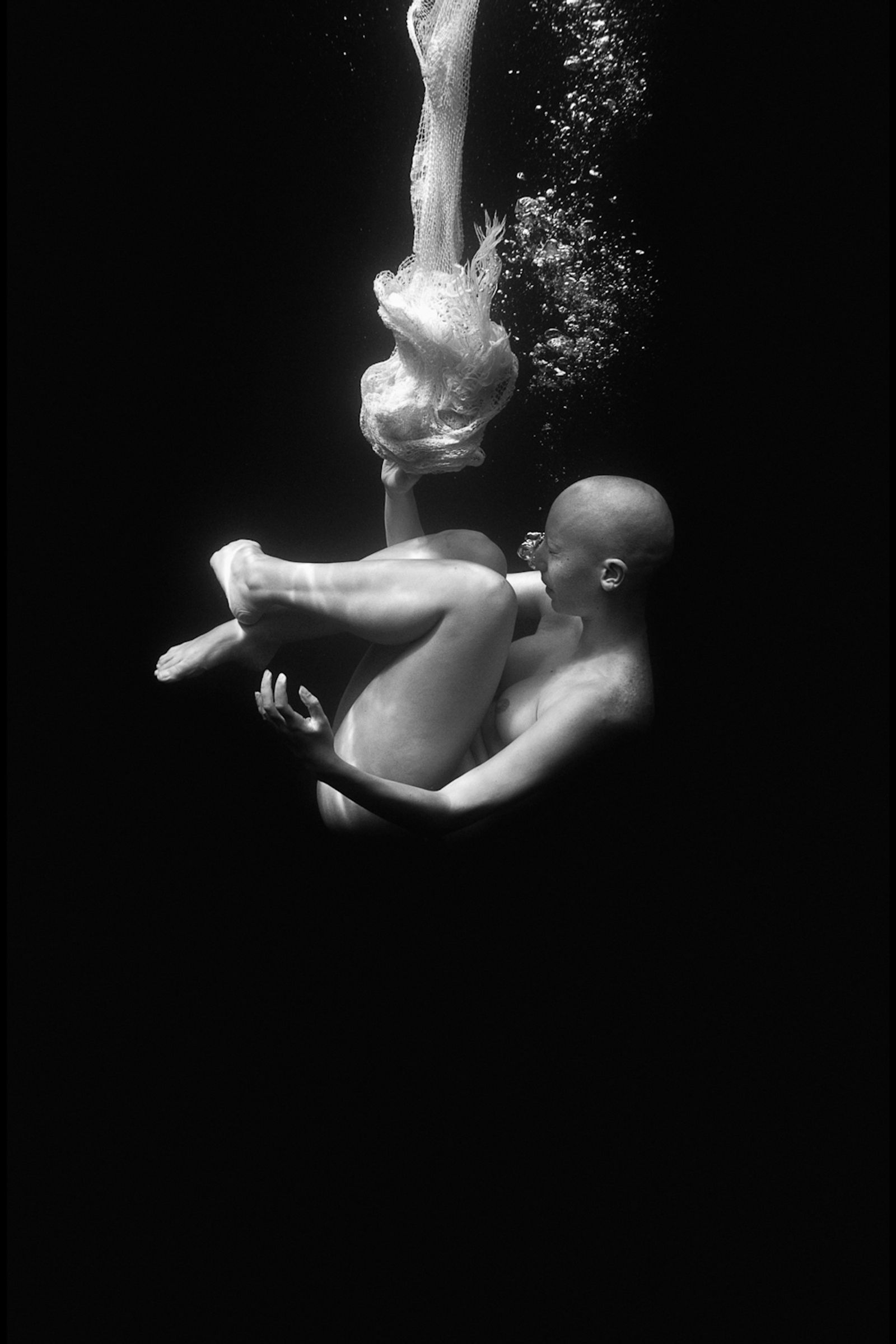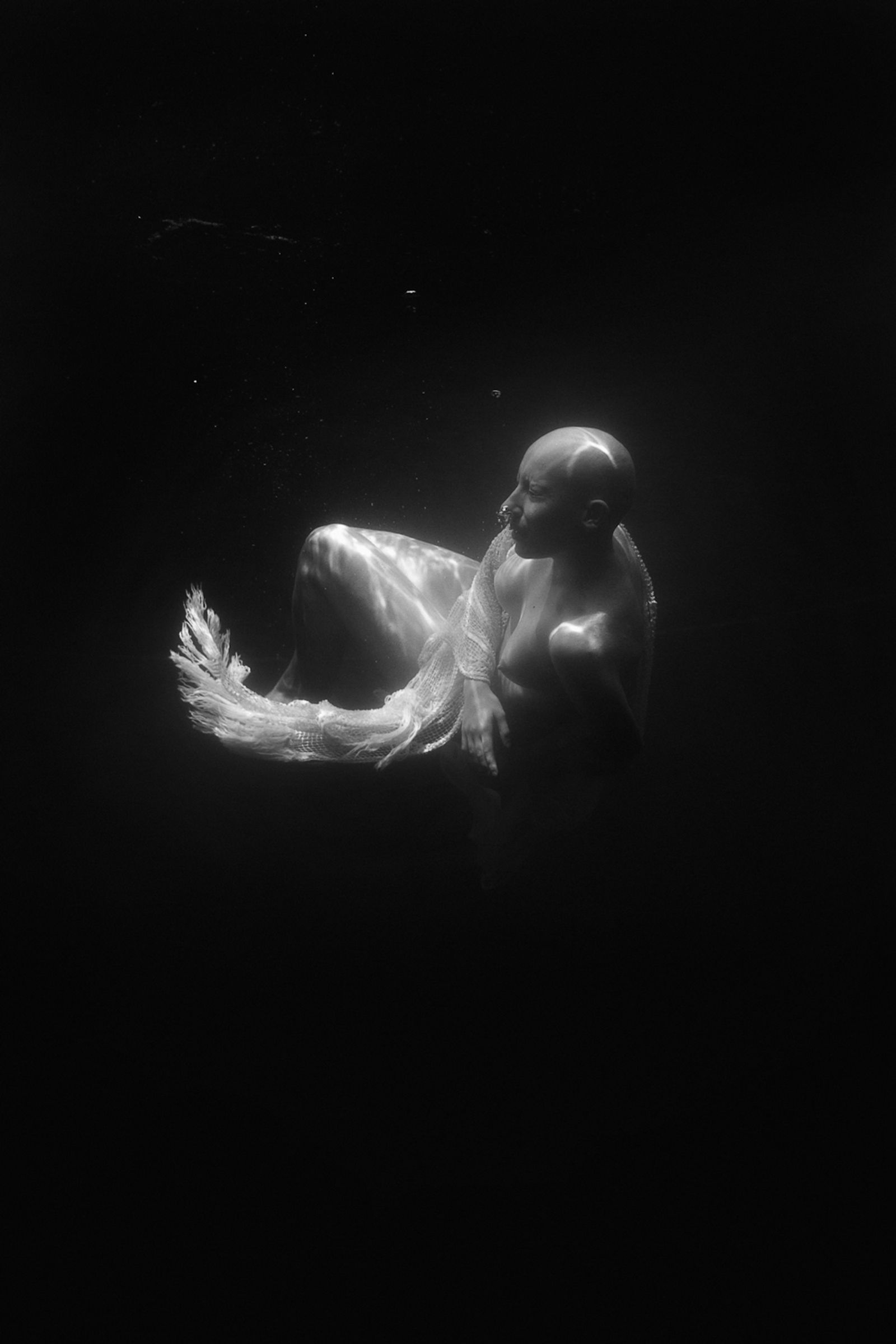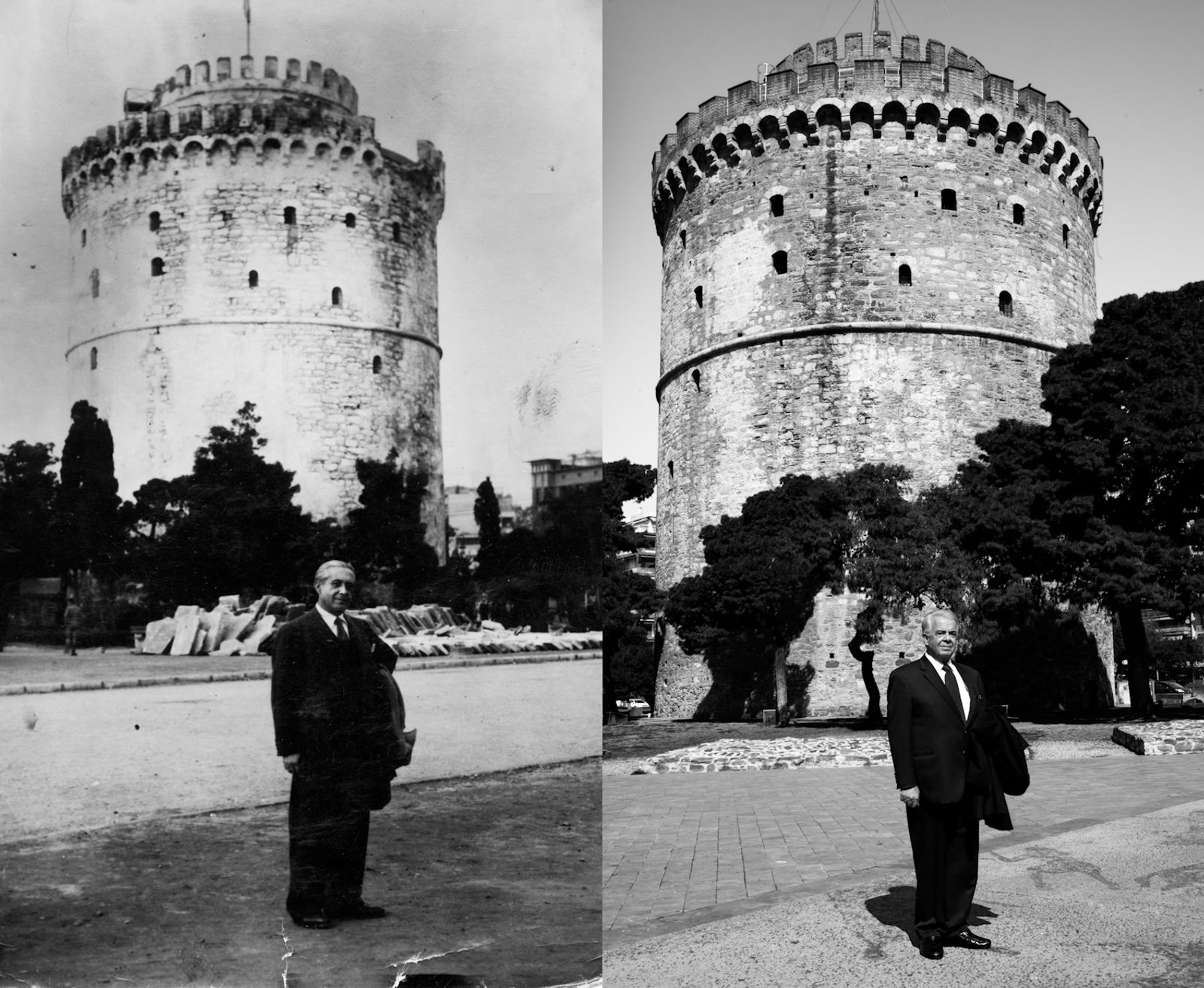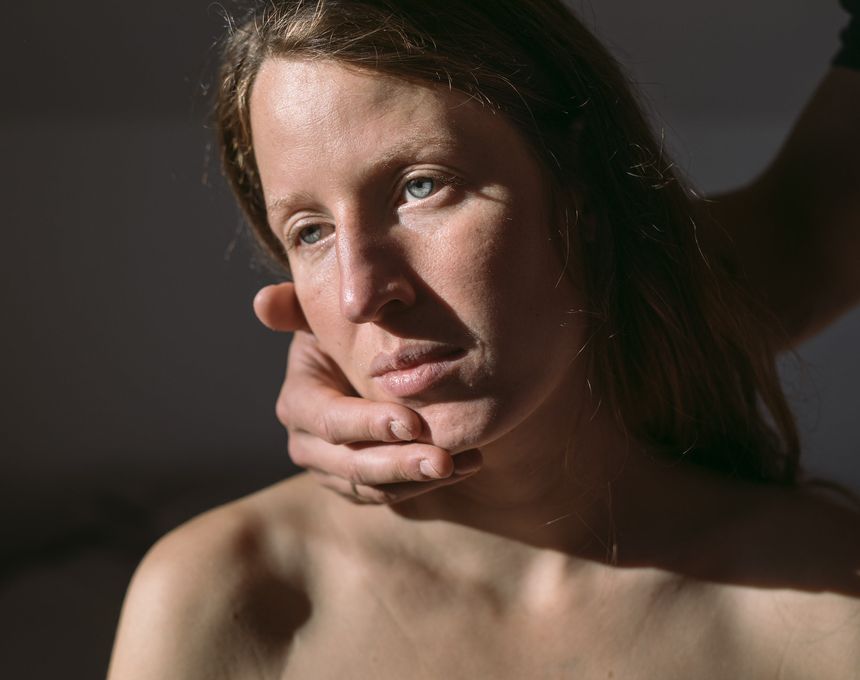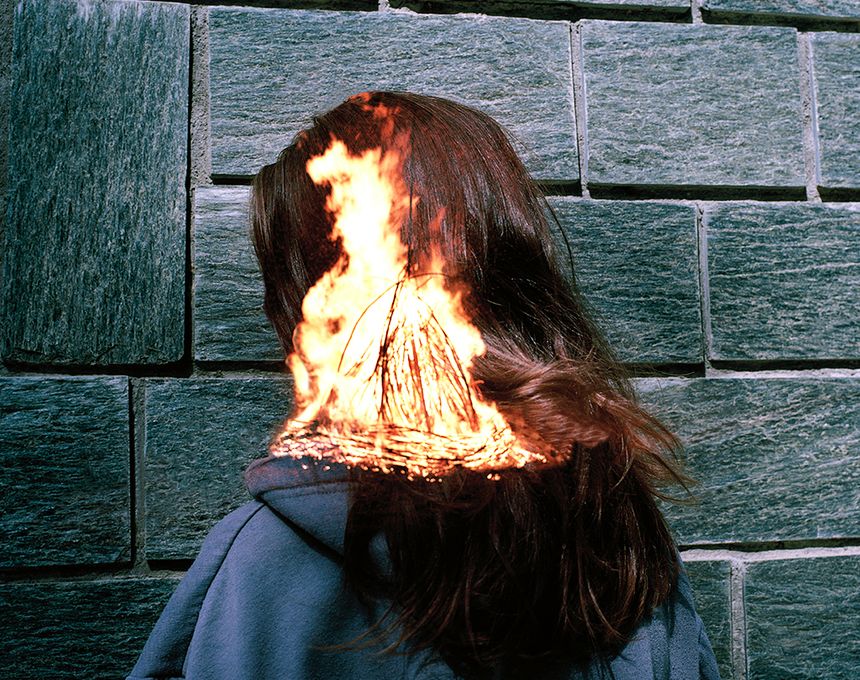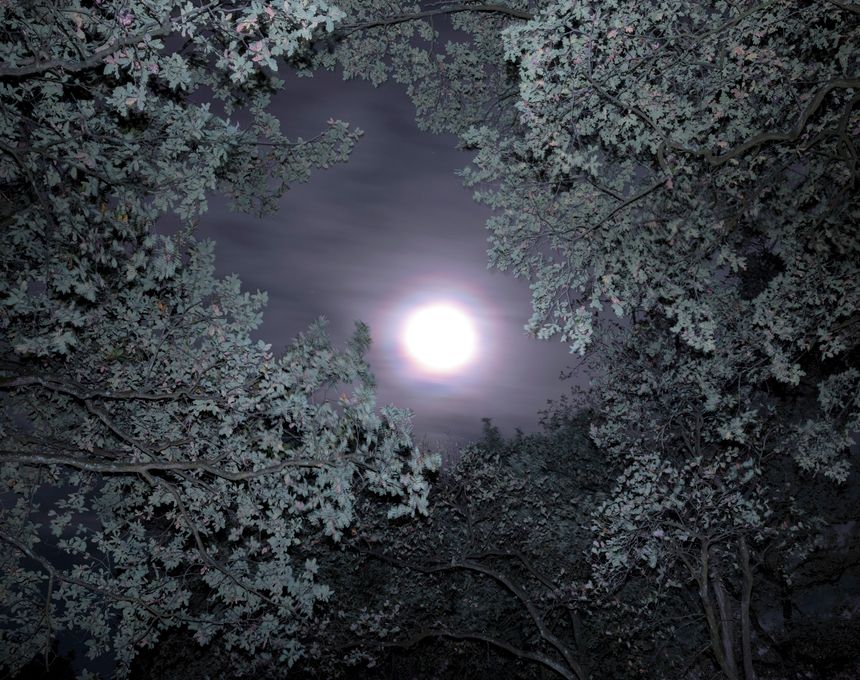TEHOM - ABYSS
-
Dates2018 - Ongoing
-
Author
On the 15th of March 1943, at the Thessaloniki Railway Station, the first death train bound for the concentration camp of Birkenau in Poland could be heard blowing its whistle. 2.800 Greek jews were cramped in locked animal transport wagons. By August 2nd, 19 shipments, arriving at night and under fog (“Nacht und Nebel”), carried 46.061 Greek Jews to these camps, where most were killed. Amongst them, my great grandmother Sol Venezia, and her children Olga, Lina and Isaac.
Clothes and fabrics were all what my family inherited as objects of memory of people lost and their struggle to survive. In the photographs, a knitted curtain was ritually plunged into the water, symbolically fulfilling the need for cleansing while the floating of the body is associated with the primary form of life in the womb. The dark waters refer to Tehom, the abundant deep of the abyss that cover the invisible and infertile earth in the Bible. Present is also the life giving divine spirit that wanders in the water and generates the light of love, acceptance and forgiveness.
Timeline of events
In 1943 my grandfather Albert Revah who had escaped from Thessaloniki, lived in a state of fear in a small apartment in Athens and survived with the help of friends.
In October 1944, once the Germans left Athens my grandfather had one single purpose: to organize the homecoming of his family. With loans he bought beds, blankets, clothes and every day he gathered things that he could find in the ruins of Athens.
A few months went by and my grandfather learned that few had returned from the camps and among those was a friend whose life had been spared, because before the war and the rise of the Nazis, he was an employee at the German Consulate in Thessaloniki and spoke fluent German. The Germans had placed him as a secretary at Birkenau and he wrote the lists with the names of all who went to the gas chambers. From this doleful man, my grandfather learned the loss of his entire family.
